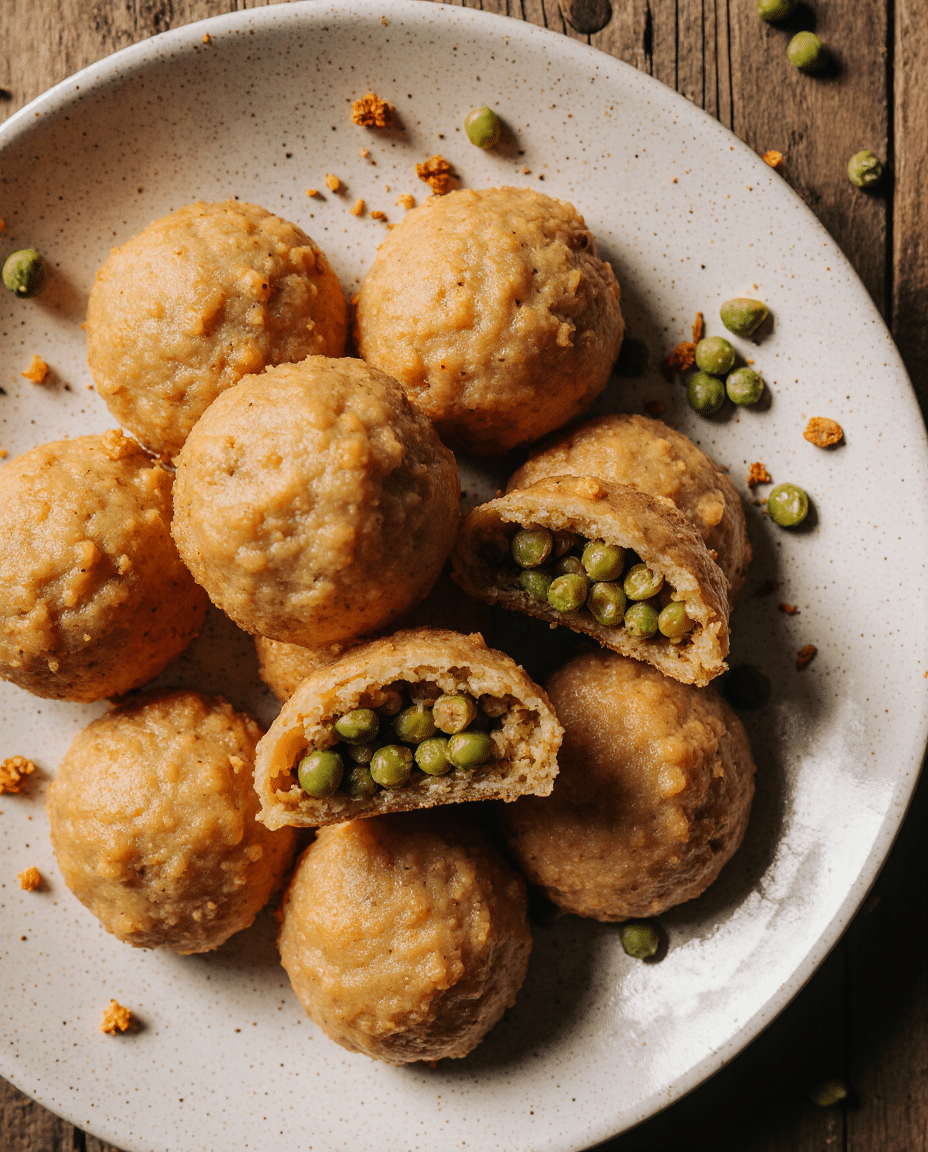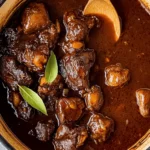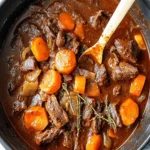Matar Kachori is a beloved Indian snack that combines the comforting flavors of spiced green peas with the satisfying crunch of a golden, flaky pastry. Traditionally served during festivals or as a special tea-time treat, this dish features a rich filling made with mashed green peas, fragrant spices, and a hint of tanginess. The outer shell is made from a crisp yet tender dough, typically deep-fried until beautifully puffed and golden brown.
FULL RECIPE
Ingredients
1.For the Dough:
- 2 cups all-purpose flour
- 1/4 cup ghee or oil
- 1/2 teaspoon salt
- Water, as needed (for kneading)
2.For the Filling:
- 1 1/2 cups green peas (fresh or thawed if frozen)
- 1 tablespoon oil
- 1/2 teaspoon cumin seeds
- 1/4 teaspoon asafoetida (hing)
- 1 tablespoon grated ginger
- 1–2 chopped green chilies (optional)
- 1/2 teaspoon fennel seeds
- 1/2 teaspoon coriander powder
- 1/2 teaspoon garam masala
- 1/2 teaspoon amchur (dry mango powder)
- Salt to taste
- 2 tablespoons chopped fresh coriander (optional)
3.For Frying:
- Oil for deep frying
Directions
- Prepare the Dough: In a large bowl, mix flour and salt. Add ghee or oil and rub it into the flour until it resembles coarse breadcrumbs. Slowly add water, a little at a time, and knead into a stiff yet pliable dough. Cover with a damp cloth and let rest for 30 minutes.
- Make the Filling: Heat 1 tablespoon oil in a pan. Add cumin seeds and asafoetida. Once the cumin sizzles, add ginger, green chilies, and fennel seeds. Sauté briefly. Add the green peas and cook until soft, about 5–6 minutes. Mash coarsely using a potato masher or blend slightly in a food processor. Return to the pan and add coriander powder, garam masala, amchur, and salt. Cook for another 2–3 minutes to combine flavors. Let the mixture cool completely.
- Assemble the Kachoris: Divide the dough into small lemon-sized balls. Roll each into a small disc. Place a spoonful of filling in the center. Bring the edges together and seal tightly. Gently flatten into a disc without letting the filling spill out.
- Fry the Kachoris: Heat oil in a deep pan over medium heat. Drop in a few kachoris at a time and fry on low to medium heat until golden and crisp on both sides, about 6–8 minutes. Do not overcrowd the pan. Drain on paper towels.
- Serve: Serve hot with mint chutney, tamarind chutney, or a cup of chai.
Nutrition Facts
- Calories: 210
- Total Fat: 11g
- Saturated Fat: 2.5g
- Cholesterol: 0mg
- Sodium: 170mg
- Total Carbohydrates: 24g
- Dietary Fiber: 3g
- Sugars: 1g
- Protein: 5g
Cultural Significance and Origins
Matar Kachori holds a treasured place in Indian culinary tradition, particularly in northern regions such as Uttar Pradesh and Rajasthan. It is commonly served during festivals, family gatherings, and special occasions, often enjoyed with a hot cup of chai or paired with tangy chutneys. The dish symbolizes indulgence, often associated with celebratory moments and monsoon snacking. Its flaky texture and savory filling have made it a staple of Indian street food culture, and it continues to be adapted in households and restaurants alike with regional twists and homemade flair.
Texture and Flavor Experience
One of the standout features of Matar Kachori is its captivating contrast in texture. The outer pastry shell, deep-fried until golden, is crisp and flaky, yielding easily to reveal a soft and spicy filling of mashed green peas. The flavor profile is a well-balanced blend of earthy peas, warm spices like cumin and garam masala, a hint of sweetness from fennel, and a touch of tartness from amchur (dry mango powder). This harmony of taste and texture is what makes the kachori so addictive, offering a bold burst of flavor in every bite.
Health and Nutritional Aspects
Although Matar Kachori is an indulgent fried snack, it offers some nutritional value, especially from the green peas. Peas are rich in plant-based protein, dietary fiber, vitamins A and C, and minerals such as iron and magnesium. The spices used in the filling—like cumin, ginger, and asafoetida—not only enhance flavor but also aid digestion. However, the dish is deep-fried, making it high in calories and fat, so it is best enjoyed occasionally. Health-conscious individuals may opt for baking or air frying as alternatives for a lighter version.
Regional and Recipe Variations
Across India, there are many variations of kachori that reflect local tastes and ingredients. While Matar Kachori is particularly popular in North India, regions like Gujarat may fill their kachoris with moong dal or a mix of lentils and spices. Some recipes include a bit of besan (gram flour) in the dough for added crispness. Others may incorporate nuts like cashews in the filling for richness. Spices can be adjusted depending on preferences—some versions are tangier with extra amchur, while others are more robust with additional chili or garam masala.
Preparation Tips for Better Results
Making perfect Matar Kachori at home requires attention to both dough and filling consistency. The dough should be stiff but pliable to create a flaky crust and avoid soaking excess oil. Resting the dough is essential for elasticity and texture. The filling should be well-cooked and dry to prevent it from bursting while frying. Using fresh or thawed green peas and slightly mashing them allows for a smooth yet chunky texture. Deep frying should be done over medium-low heat to allow even cooking and prevent burning or uneven puffing.
Pairing Suggestions
Matar Kachori pairs beautifully with a variety of chutneys and accompaniments. Tangy tamarind chutney enhances its sweetness, while mint-coriander chutney adds a refreshing herbal note. For a heartier meal, kachoris can be served with a spicy potato curry or yogurt-based side. Street-style vendors often accompany them with pickles or a drizzle of sweet curd and sev for added texture. Beverages like masala chai, sweet lassi, or spiced buttermilk complement the richness of the dish and provide a complete snacking or brunch experience.
Make-Ahead and Freezing Options
Matar Kachori is a great candidate for make-ahead preparation, especially for gatherings or festivals. The dough and filling can be prepared in advance and stored separately in the refrigerator for up to 2 days. Assembled, uncooked kachoris can also be frozen on a tray and then transferred to a ziplock bag for longer storage. When ready to cook, they can be thawed slightly and fried as usual. This make-ahead flexibility makes them a go-to snack for entertaining or satisfying sudden cravings with minimal effort.
Alternative Cooking Methods
While traditional kachoris are deep-fried, several modern adaptations allow for healthier cooking methods without compromising much on texture. Baking them in a preheated oven at 375°F until golden can reduce oil consumption. Brushing them with oil before baking ensures a slightly crispy exterior. Air frying is another excellent option that mimics the frying texture while using significantly less oil. These alternatives are particularly appealing for those on a calorie-conscious diet or looking for less greasy snack options without missing out on the beloved flavor of Matar Kachori.
Creative Leftover Ideas
If you have leftover Matar Kachoris, they can be repurposed creatively to minimize food waste. Crushed kachoris make an excellent crunchy topping for chaat, salad bowls, or even raita. You can reheat them in an oven or air fryer to restore their crispness and serve them as a side to soups or stews. Another unique idea is to stuff them into wraps or sandwiches with chutneys and fresh vegetables, turning them into a fusion street-food-style meal. These inventive uses breathe new life into this classic snack and keep meals interesting.
Advertisement
Festive and Seasonal Relevance
Matar Kachori is a staple snack during Indian festive seasons, especially during Diwali, Holi, and Raksha Bandhan, when special foods are prepared for family and guests. It is also a beloved snack during the winter and monsoon months when warm, spicy foods are particularly comforting. The seasonal availability of fresh green peas in winter also makes it an ideal dish for cold-weather snacking. Its festive appeal and the ability to prepare it in bulk make it an excellent choice for entertaining guests or creating a celebratory spread.
Conclusion
Matar Kachori is more than just a savory snack—it’s a culinary journey that blends texture, spice, and tradition into one irresistible bite. From its flaky, golden crust to its spiced green pea filling, every aspect of this dish reflects the depth and richness of Indian cuisine. With room for endless variations, healthier adaptations, and creative pairings, it remains a timeless favorite that appeals to generations.






